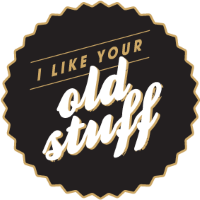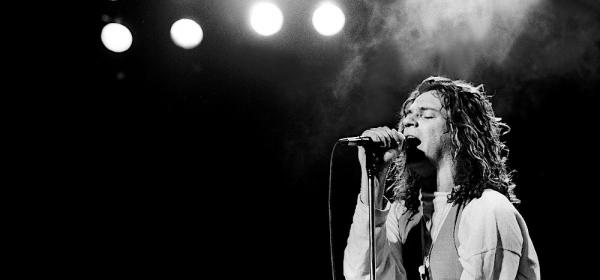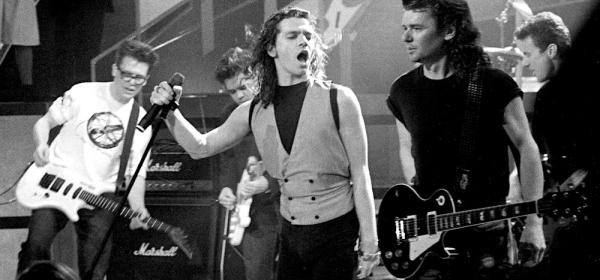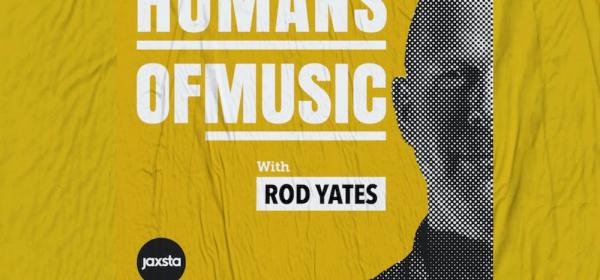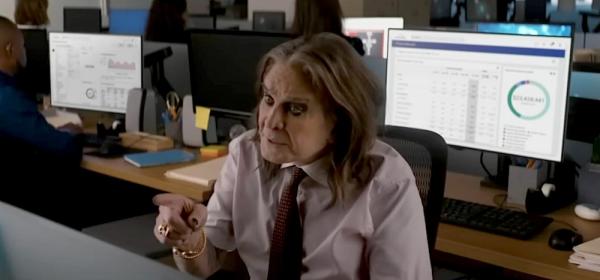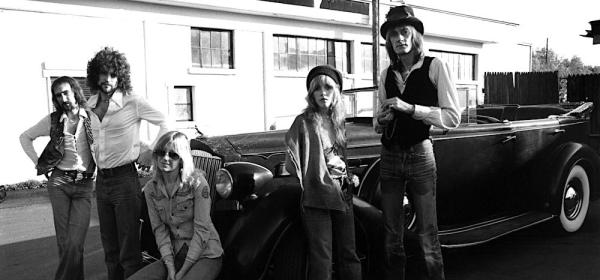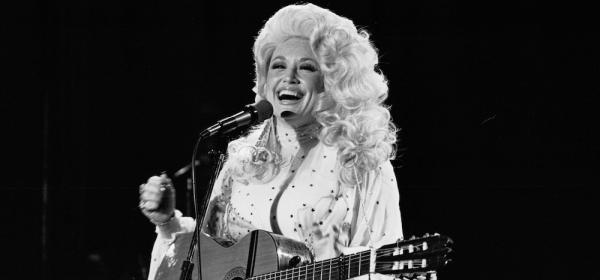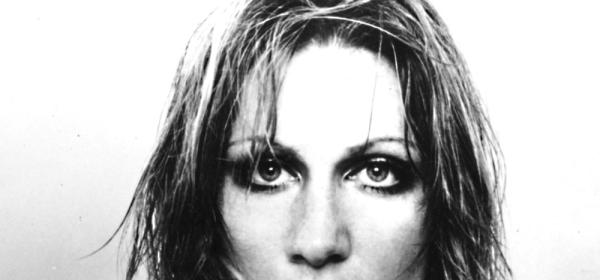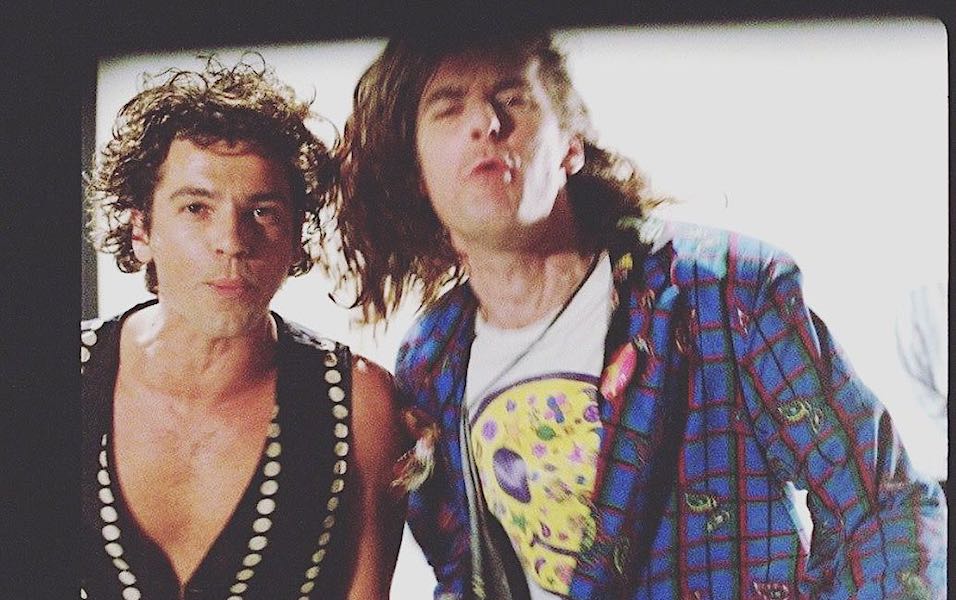
Melbourne underground musician, Ollie Olsen was a key figure in Australian punk, post-punk and electronic music long before his brief flirtation with the mainstream when he teamed up with INXS's Michael Hutchence – at the height of his worldwide popularity – in the group Max Q, who released one album in 1989.
Acclaimed upon its release, and achieving Gold sales here at home where Olsen's reputation carried some weight, the Max Q album didn't quite realise the international success its creators had hoped for, perhaps to the relief of the rest of INXS. The music was darker and deeper than anything Hutchence had ever been involved with previously, but Olsen's songs were strong and accessible. The single "Way Of The World" certainly deserved better.
Max Q | “Way Of The World”
Max Q came about via Olsen and Hutchence's collaborations on the 1986 film Dogs In Space, which starred Hutchence and was set in the inner-city Melbourne scene of the post-punk era. Olsen produced the music for the film, which was directed by Richard Lowenstein. A single from the soundtrack, Hutchence's version of a song Olsen had written for his old band Whirlywirld, entitled "Rooms For The Memories,” was the first product of their collaboration.
Michael Hutchence | “Rooms For The Memory”
Immediately before all this was happening, Olsen was fronting and leading popular Melbourne electro-punk band called, No. No released a couple of albums – the first of which was the splendidly titled Glory For The Shit For Brains - and made serious waves on the alternative scene with their furious and unrelenting mix of electronics and rock.
No | “Slave”
No | “Death To The Users Of The World”
No guitarist, Michael Sheridan and Whirlywirld guitarist, Arne Hanna were amongst those who joined Olsen and Hutchence in Max Q. Hutchence probably didn't win himself any fans with this crowd when he rather patronisingly told the Los Angeles Times: "Ollie isn't supposed to hang around with pop stars and I'm not supposed to hang around with punk types. The band is made up of rowdy friends from Melbourne. These guys are good musicians who've never had a chance. Most of them have never even been in a studio. These are real underground people who don't have any money. Some of them have never been on a plane before. They were worried that working with me, they'd lose their underground status."
Before No, Olsen had worked with percussionist, John Murphy and future No keyboard player, Marie Hoy as the Orchestra of Skin & Bone (whose album featured two songs that were later rerecorded by Max Q, "Sometimes" and "Ot-Ven-Rot"), and before that, with Murphy, in Hugo Klang, initially in the UK. Olsen and Murphy moved to the UK, apparently on the recommendation of Iggy Pop, who had heard their work as Whirlywirld while in Australia in 1979 (for a promo tour that included his infamous Countdown appearance).
Orchestra Of Skin & Bone | “Sometimes”
Whirlywirld – whose complete recorded output is to be reissued this month in a co-release by Melbourne label Sorcerer Records and Chicago label HoZac Records – was the band with which Olsen first impacted the Australian scene. Whirlywirld were early movers on Melbourne's post-punk scene; a scene that ran more or less concurrent with the punk scene, thanks to its adopters' fast transition from Stooges/Ramones-influenced guitar-based music to more experimental sounds. Olsen had already been in two bands of note by 1977. First was The Reals, which also featured future Sacred Cowboys singer Garry Grey and Moodists bass-player Chris Walsh. The Reals were pretty much Melbourne's first punk-band (some raw 1975 home recordings by the Reals were released on CD in 2008 – more details here). Then came the Young Charlatans, who are now well known as the band that Rowland S Howard featured in before he joined the Boys Next Door (taking with him his iconic tune "Shivers").
In the Reals and the Young Charlatans, Ollie had played guitar, but by 1978 he was looking for a change. He formed Whirlywirld in May, singing, and also playing synthesiser, clarinet and saxophone. John Murphy, who joined on drums, had come from Ramonesy politico-punks, News (themselves notorious for their extensive graffiti campaign around inner-city Melbourne). The other original members of the band were Andrew Duffield on synthesiser (Duffield and Olsen had both studied under Melbourne-based German-born electronic music composer Felix Werder), Dean Richards on guitar, and a third synth player, Simon Smith.
Whirlywirld's first release was a 7" EP on leading local independent label Missing Link, and the band played its first show at Melbourne's alternative music hub, the Crystal Ballroom, in June 1979. Although he appeared on the record, Andrew Duffield had left by that first gig, to form the Models with Sean Kelly. Dean Richards would soon also go, to form another significant Melbourne band, Equal Local.
Indeed, by the time Whirlywirld entered the studio again, in December 1979, Murphy was the only original member still by Olsen's side. The new recordings were released as a 12" EP with bonus 7" single, again on Missing Link, in early 1980, by which time Olsen and Murphy were already contemplating their move to London. (While Olsen would return to Melbourne in 1982 and form a new line-up of Hugo Klang, Murphy joined acclaimed Scottish outfit the Associates and stayed on for a couple more years.)
Whirlywirld | “Window To The World”
As Complete Discography 1978 - '80 attests, Whirlywirld were genuine electronic pioneers who combined synthesisers with drums and guitars in a manner that shifted things away from any standard rock dynamic. Inspired by the likes of Kraftwerk and Suicide, the group could be considered contemporaries of fellow Melbournites the Primitive Calculators, Sydney groups like Voigt/465 and SPK, and key UK outfits like Cabaret Voltaire, Throbbing Gristle, early Human League, The Normal, perhaps even Joy Division. In a song like "Window to the World", the electronics provide both melody and a pulsating rhythm while the phased drums provide a panoramic sense of motion. In "Win/Lose", which dated back to Olsen's days in the Young Charlatans, a loudly burbling electronic rhythm, driven along and accented by Murphy's symbols, provide a steady throb to underpin the haunting melody of Arnie Hanna's treated guitar and Olsen's near-baritone vocal, which, like that of Ian Curtis, perhaps echoes both David Bowie and Iggy Pop – and anticipates Hutchence's work with Max Q – in its use of lower registers.
Whirlywirld | “Win/Lose”
Given that Max Q came about through a collaboration for a film that looked back to the era in which Whirlywirld existed, it's easy to draw a direct line between the two groups. Max Q was undoubtedly more polished and sophisticated, but the musical thread is clear, and Olsen maintained a strong focus on songwriting in both projects. After Max Q, Olsen would enter the worlds of trance music with the Third Eye project and the Psi-Harmonics label which he co-founded. Other projects followed in the new century until he called time on his most recent outfit Taipan Tiger Girls – another exploration of the interface between electronics and guitar – in early 2019, at which time he announced his retirement.
With the pending reissue of his classic Whirlywirld material, it seems Olsen has announced his return to music-making – and we look forward to hearing more from him.
Australian buyers can pre-order Complete Discography 1978 - '80, here. Overseas buyers can order here.
Whirlywirld feature on the 2017 Festival/Warner Australia collection Closed Circuits: Australian Alternative Electronic Music of the 70s & 80s. Listen on Spotify:
Listen to Closed Circuits: Australian Alternative Electronic Music of the 70s & 80s on Apple Music:
